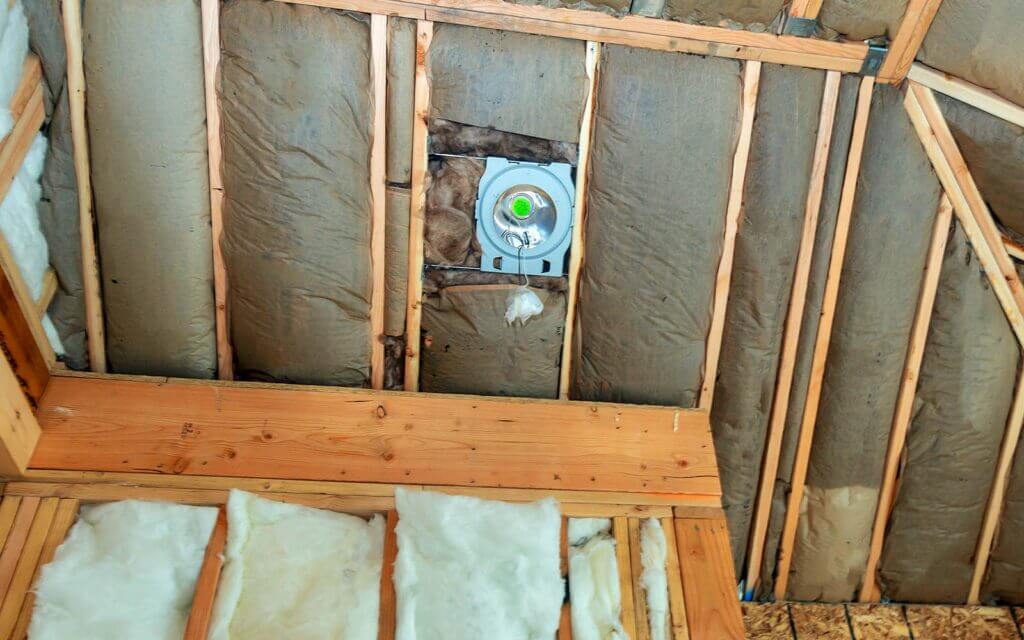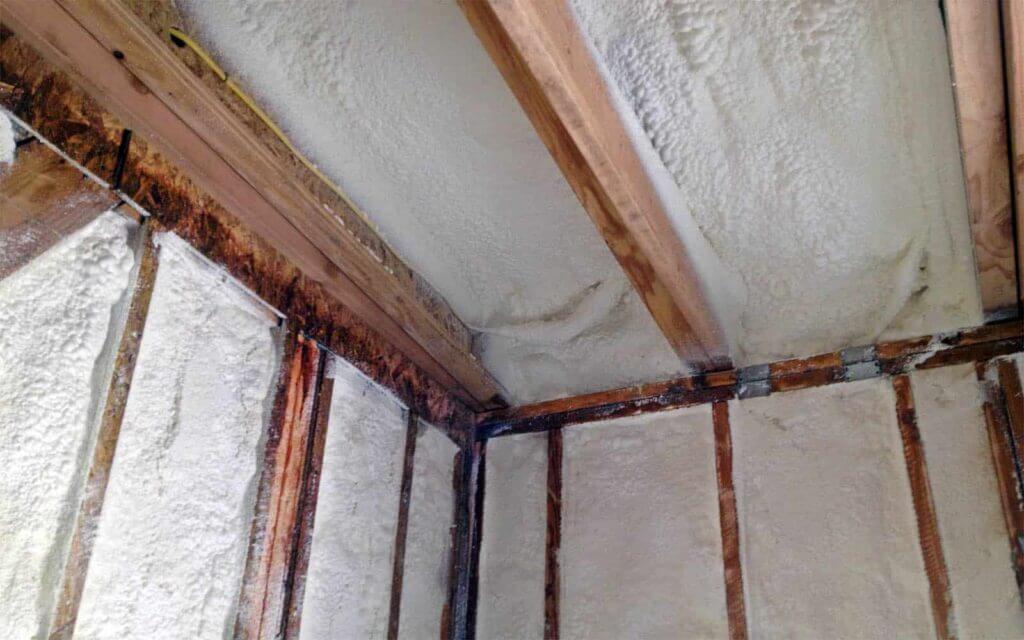With attic insulation, you slow down any heat or vapor build-up in your attic that could cause swollen roof or plywood and end up cracking.
In a place like San Antonio, TX, where it’s mostly hot summers with mild winters, you want to ensure that you pick the most suitable attic insulation for this kind of temperature.
Apart from the price, most people go for a given type of insulation because of durability, R-Value, accessibility, and eco-friendliness.
Below are some of the most commonly used types of attic insulation.
1. Fiberglass Batt Insulation

This is the most commonly used means of attic insulation for areas with high temperatures. Batt insulation features an R-Value of about R-2.9 to R-3.8. This type of insulation is available in two forms, namely, batts and long rolls.
Batt insulation is commonly used for home ceilings and walls, while long roll insulation is only suitable for ceiling use.
The following are some of the pros and cons of using fiberglass insulation for your home-
Advantages
- Fiberglass is affordable for most homes and is also an efficient type of attic insulation. The price of fiberglass rolls ranges from $0.80 to $1.00 depending on the brand, material thickness, and the R-value for insulation.
- Fiberglass is made from a combination of glass and plastic polymers, which makes it fire-resistant.
- Fiberglass is available in medium and high-density, depending on your budget.
- It is not easily nibbled by insects since it’s not nutritive to them.
- Fiberglass is made from recycled glass which reduces its ecological footprint.
- Fiberglass is made up of glass reinforcements which means it can’t shrink easily.
Disadvantages
- Protective gear has to be worn when installing fiberglass insulation since it’s made up of tiny glass particles which are easily inhalable and can irritate your skin.
- Plastic seals are required to protect fiberglass from moisture.
- Fiberglass doesn’t seal the ceiling and walls tightly which means that moisture can leak and ruin the ceiling or walls over time.
- Fiberglass is prone to sagging, which makes its R-Value decrease with time.
- If the glass slivers are inhaled during installation, they could cause lung cancer.
- Fiberglass insulation requires a re-gel coating every five years, which can be a costly endeavor.
2. Blow-In Insulation

Blow-in insulation is one of the most commonly used types of attic insulation. This type of insulation comes in three types; cellulose, rock wool, and loose-fill fiberglass. It’s important to note that each type has a different R-Value.
Loose-filled fiberglass
Loose-filled fiberglass is made from heated glass that is melted to liquid form and then developed into thinner fibers blown to your attic.
This form of insulation offers an R-Value of R-2.5 per inch, meaning that you’d need to create a thickness of 7.5 inches to achieve the insulation R-19 batt.
Cellulose
If you’re all about eco-friendliness, this should be your go-to insulation choice because cellulose is made from recycled cardboard and newspapers.
Cellulose is chemically treated to make it mold and fire resistant and has an R-Value of about R-3.7 per inch.
This means that about five inches of cellulose layer are needed to achieve the R-19 batt.
The disadvantage of using cellulose insulation for your home is that if there is a leak on your roof, it can get soaked and lose its fluffiness and R-Value.
Rock wool
Rock wool insulation has an R-Value of about R-3.3 per inch, and it’s needed to cover an area of 60 square feet to achieve a thermal value equivalent to R-19 batt.
It’s important to note that cellulose insulation is also the most expensive among the three types due to its exceptional fire resistance.
Advantages
- This insulation is known to efficiently fill all the gaps of your ceiling and walls and increase your home’s energy savings.
- Materials used in this insulation can be layered to increase protection.
- Blow-in rock wool and fiberglass have high fire resistance.
- Materials used in cellulose and rock wool insulation are non-toxic, meaning that no excessive gear should be worn during installation.
Disadvantages
- The installation process requires a trained professional.
- Due to the materials used in this form of insulation, the process can be messy.
- The ceiling could end up sagging if more layers of materials are used.
- Materials used in this insulation are very troublesome if wet.
3. Spray Foam Insulation
Although this type of attic insulation was commonly used for airplanes, recent innovations have led to many home owners adopting it.
Foam-insulation comes in two forms, namely, open-cell and closed-cell. Open-cell spray foam-insulation is commonly used for interior applications. Some common areas include basement walls, attics, the underside of roof decks, and wall cavities due to its low-density nature.
Closed-cell spray foam-insulation, due to its medium-density, is applicable for both exterior and interior applications depending on the homeowner’s preference.
Open-cell spray foam-insulation has an R-Value ranging from 3.5 to 3.6. However, closed-cell spray foam insulation has an R-Value of R-4.9 to R-7.1.
Advantages
- After drying, foam insulation creates a solid air barrier and often contributes to energy savings of 30% to 50% per year.
- The material used in this insulation can reach remote parts of the walls or ceilings.
- The high R-Values mean that this type of insulation is durable.
Disadvantages
- This type of attic insulation is more expensive than the others.
- Its installation process requires a professional.
- Toxins from the materials used in this type of insulation can pose health hazards to installers.
So What’s the Best Type of Attic Insulation?
That is completely up to you and your preferences. Whether you’re looking for the maximum protection that spray-in insulation offers, or the budget-friendliness of fiberglass batt, as a home owner you have some options.
It’s very important to hire a professional for your attic insulation installation. This is because a poorly insulated attic can lead to even high energy bills since your HVAC systems are forced to work twice as hard to maintain your home’s temperatures.
